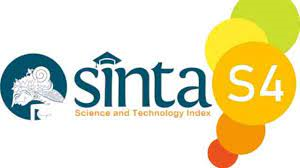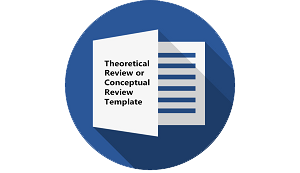A Linguistic Landscape Analysis of Pannon Egyetem Utca. 12. Through a Multilingual Lens.
DOI:
https://doi.org/10.30957/ijoltl.v7i1.695Keywords:
Linguistic Landscape, Signs, Multilingualism, Top-Down, Bottom-Up, Multilingual Information, Egyetem Utca. 12.Abstract
The current study examines the linguistic landscape of one of the main streets of Veszprem, the street of Pannonia University (Egyetem Utca. 12). The importance of analyzing public signs and the distribution of languages on this street stems from its dynamic location. Pannonia University is an interesting enough reason to investigate the street. Its location is hypothesized to have an impact on the street's multilingual nature, especially since the existence of a student dormitory on the street attracts international students with different linguistic and cultural backgrounds. This investigation is based on a corpus of 53 images that will be analyzed according to the function of signs as well as the taxonomy of types of the multilingual information arrangement provided by Reh (2004), namely: duplicating, fragmentary, overlapping, and complementary. The present results indicate a strong presence and dominance of the local language (Hungarian) in the linguistic landscape of the university street in Veszprem, in comparison to a minor bilingual representation on signs. The linguistic landscape in Egyetem Utca. 12. doesn’t reflect the linguistic background of the speech community, regardless of the other spoken languages and the conditions of the city itself, which receives a significant number of international students and tourists who speak different languages and use English or German as a means of communication.
Downloads
References
Ben-Rafael, E., Shohamy, E., Amara, M. H., &Trumper-Hecht, N. (2006). Linguistic landscape as symbolic construction of the public space: The case of Israel. In Linguistic Landscape (pp. 7-30). Multilingual Matters.
Coluzzi, P. (2016). The linguistic landscape of Brunei. World Englishes, 35(4), 497-508.
Coupland, N., & Garrett, P. (2010). Linguistic landscapes, discursive frames and metacultural performance: The case of Welsh Patagonia.
Dressler, R. (2015). Sign geist: Promoting bilingualism through the linguistic landscape of school signage. International Journal of Multilingualism, 12(1), 128-145.
Extra, G., Yagmur, K., & Van Der Avoird, T. (2004). 6. Methodological considerations. In Urban Multilingualism in Europe (pp. 109-132). Multilingual Matters
Gorter, D. (2006). Linguistic landscape. A new approach to multilingualism. Clevedon: Multilingual Matters, 10(9781853599170).
Hanauer, D. I. (2010). Laboratory identity: A linguistic landscape analysis of personalized space within a microbiology laboratory. Critical Inquiry in Language Studies, 7(2-3), 152-172.
HUEBNER, L. L. T. (2008). A framework for the linguistic analysis of linguistic landscapes. In Linguistic Landscape (pp. 78-95). Routledge.
Huebner, T. (2016). Linguistic landscape: History, trajectory and pedagogy. Manusya: Journal of Humanities, 19(3), 1-11.
Hult, F. M. (2008). Language ecology and linguistic landscape analysis. In Linguistic Landscape (pp. 96-144). Routledge.
Jaworski, A., & Thurlow, C. (2010). Introducing semiotic landscapes. Semiotic landscapes: Language, image, space, 1-40.
Jaworski, A., & Yeung, S. (2010). 9. Life in the Garden of Eden: The Naming and Imagery of Residential Hong Kong (pp. 153-181). Multilingual Matters.
Kallen, J. L., &Dhonnacha, E. N. (2010). 2. Language and Inter-language in Urban Irish and Japanese
Laihonen, P. (2012). Nyelvi tájkép egy csallóközi és egy mátyusföldi faluban,'The Linguistic Landscape of Two Hungarian villages in South-West Slovakia'. In Fórum Társadalomtudományi Szemle-Forum Social Science Review (Vol. 14, No. 3). Forum Minority Research Institute.
Landry, R., &Bourhis, R. Y. (1997). Linguistic landscape and ethnolinguistic vitality: An empirical study. Journal of language and social psychology, 16(1), 23-49.
Landry, R., &Bourhis, R. Y. (1997). Linguistic landscape and ethnolinguistic vitality: An empirical study. Journal of language and social psychology, 16(1), 23-49.
Lanza, E., & Woldemariam, H. (2014). Indexing modernity: English and branding in the linguistic landscape of Addis Ababa. International Journal of Bilingualism, 18(5), 491-506.
Lay, R. E. (2015). Linguistic Landscape of Main Streets in Bosnia and Herzegovina.
Li, X., Lu, L., Cheng, G., & Xiao, H. (2001). Quantifying landscape structure of the Heihe River Basin, north-west China using FRAGSTATS. Journal of Arid Environments, 48(4), 521-535.
Pavlenko, A. (2012). Transgression as the norm: Russian in linguistic landscape of Kyiv, Ukraine. In Minority languages in the linguistic landscape (pp. 36-56). Palgrave Macmillan, London.
Reh, M. (2004). Multilingual writing: A reader-oriented typology—with examples from Lira Municipality (Uganda).
Rezaei, S., & Tadayyon, M. (2018). Linguistic landscape in the city of Isfahan in Iran: The representation of languages and identities in Julfa. Multilingua, 37(6), 701-720.
Rosenbaum, H. (1977). Zapotec gapping as counterevidence to some universal proposals. Linguistic Inquiry, 379-395.
Scollon, R., &Scollon, S. W. (2003). Discourses in place: Language in the material world. Routledge.
Spolsky, B., & Cooper, R. L. (1991). The languages of Jerusalem. Clarendon Press.
Vettorel, P., & Franceschi, V. (2013). English and lexical inventiveness in the Italian linguistic landscape. English text construction, 6(2), 238-270.
Downloads
Published
How to Cite
Issue
Section
License
Authors who publish with this journal agree to the following terms:
- Authors retain copyright and grant the journal right of first publication with the work simultaneously licensed under a Creative Commons Attribution-ShareAlike 4.0 International License that allows others to share the work with an acknowledgement of the work's authorship and initial publication in this journal.
- Authors are able to enter into separate, additional contractual arrangements for the non-exclusive distribution of the journal's published version of the work (e.g., post it to an institutional repository or publish it in a book), with an acknowledgement of its initial publication in this journal.
- Authors are permitted and encouraged to post their work online (e.g., in institutional repositories or on their website) prior to and during the submission process, as it can lead to productive exchanges, as well as earlier and greater citation of published work (See The Effect of Open Access).












